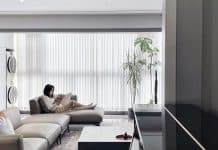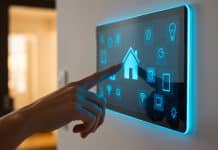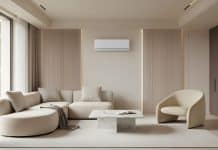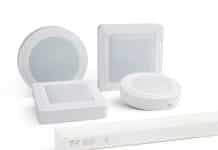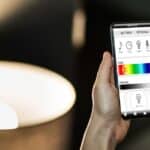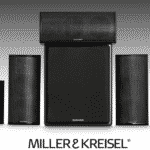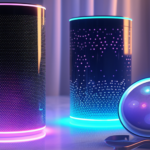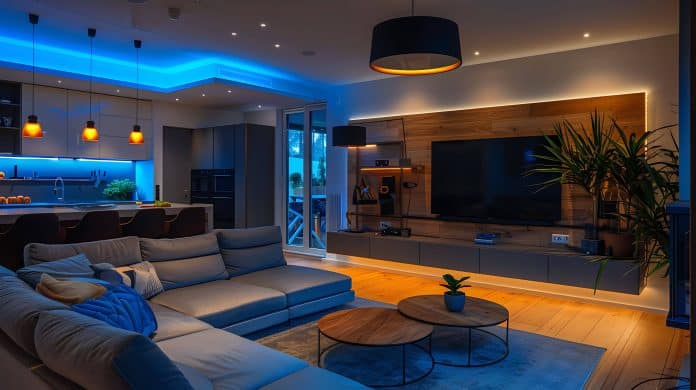
Are architects, interior designers, and system integrators collaborating to script a new design language for connected living? Smart Home World speaks with leading professionals across these fields to share their insights on shaping intelligent, responsive, and wellness-focused homes.
It’s 7 am and the bedroom lights gradually brighten, mimicking sunrise, while the blinds silently glide open. Your coffee machine has already brewed your preferred blend stronger today, sensing you slept fewer hours. As you head to the shower, the water temperature adjusts to your routine, while a wellness dashboard projects your overnight sleep score on the smart mirror. By the time you step into the living room, the thermostat has balanced energy use with outdoor weather, solar panels are channeling power into home storage, and an AI-curated playlist begins to set the tone for the day.
AI-driven personalization is creating spaces that adjust uniquely to every occupant, while interoperability standards like Matter ensure that devices from different brands communicate effortlessly. Invisible sensors quietly monitor air quality, water usage, and security, transforming maintenance into a predictive science. Not just that, wellness-centric design is emerging as the new luxury—circadian lighting that syncs with your body clock, immersive acoustic zoning, and smart ventilation that enhances indoor air quality. Even the design process is being transformed, as AR/VR tools allow homeowners to virtually walk through their future smart spaces and interact with features before construction begins.
The New Design Language
Smart homes once revolved around individual devices—an app-controlled light bulb, a video doorbell, or a voice assistant. Today, they have evolved into integrated living experiences that anticipate needs, adapt to routines, and respond intuitively. Connected living is no longer just about touch panels or wireless controls; it’s about blending technology seamlessly with architecture and interiors, making it invisible yet indispensable.
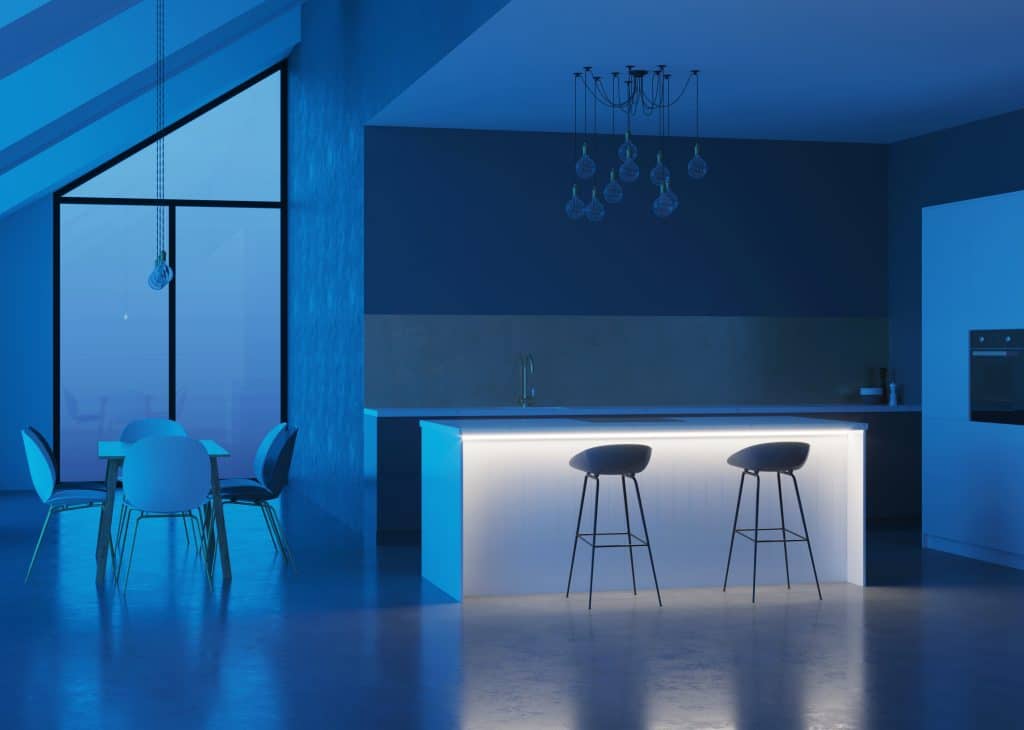
Minimalism is now the defining aesthetic, with motion sensors, voice commands, and context-aware automation replacing visible switches and bulky gadgets. Homes are designed for well-being, with circadian lighting, smart climate control, and adaptive acoustics creating spaces that are as comfortable and healthy as they are efficient. Sustainability has become a design principle rather than an afterthought, with energy-efficient devices, AI-driven power management, and smart water systems built in by default.
At the heart of this evolution is personalization. Data-driven systems allow homes to learn from inhabitants’ routines—from sleep patterns to entertainment and shopping preferences—creating spaces that adapt uniquely to each resident, delivering a truly bespoke living experience.
Technology and Aesthetics in Balance
One of the most exciting shifts in smart living is the seamless collaboration between architects, interior designers, and system integrators. The dialogue has evolved beyond “where to place the smart speaker” to how intelligence can be woven into the very fabric of design. Today, motorized furniture adapts to changing needs, lighting coves adjust their tone with the time of day, and walls double up as immersive entertainment displays.
Smart Home World, `In Conversation’ with leading system integrators, architects and interior designers offers insights into their collaborations, the challenges they face on projects, and their first-hand experiences bringing cutting-edge innovations to landmark homes.
Neha Jaene, Founder & Principal Designer, Studio Jaene
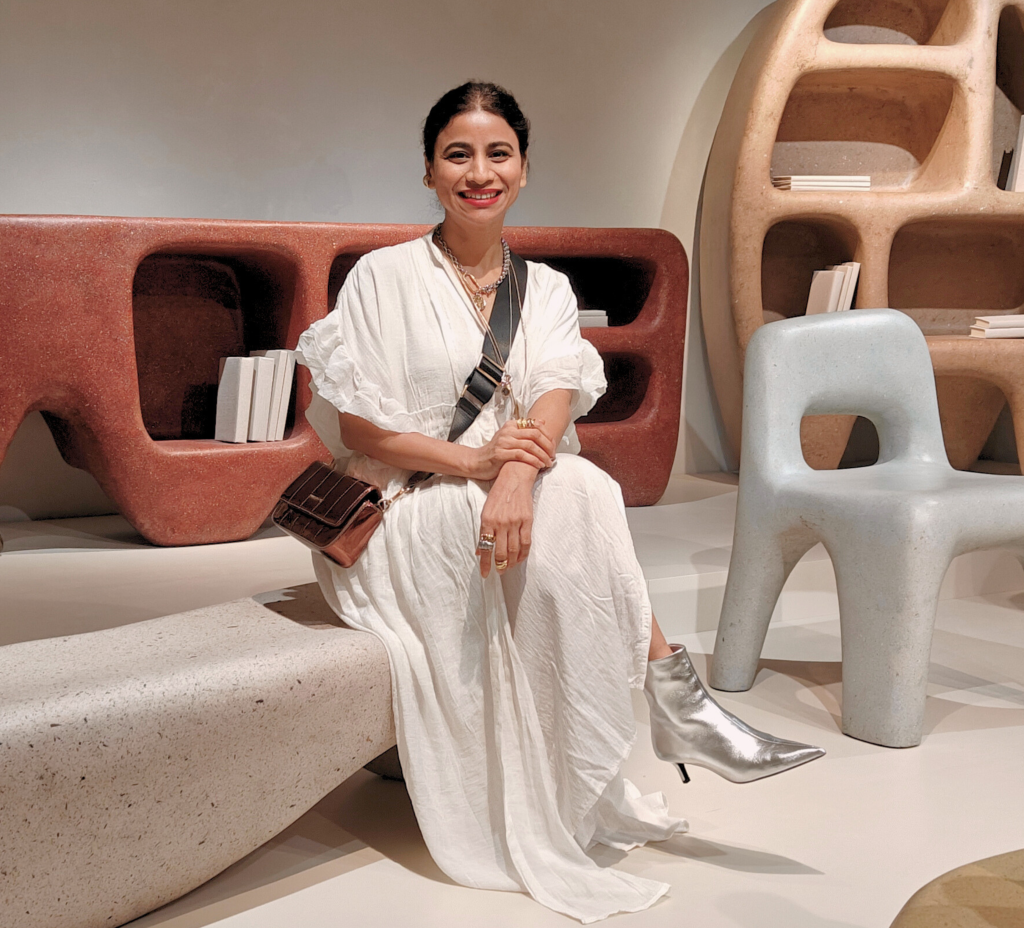
How has the growing demand for smart homes influenced your design philosophy — both in terms of space planning and aesthetics?
The demand for smart homes has shifted design conversations from just “form and function” to “form, function, and fluidity.” Space planning now accounts for how technology will layer into the user’s lifestyle — hidden conduits, sensor-driven layouts, automated shading, and multi-purpose rooms that can switch moods at the touch of a button. Aesthetically, the focus is on seamlessness: devices must blend into the spatial narrative, not interrupt it.
At what stage of a project do you typically start thinking about technology integration, and how early do you bring in system integrators or consultants?
Technology integration starts as early as concept design. Placement of lighting, acoustics, HVAC, and even furniture is influenced by automation intent. Bringing in system integrators at this stage prevents retrofits and ensures infrastructure planning from wiring to concealment details is aligned with the design journey.
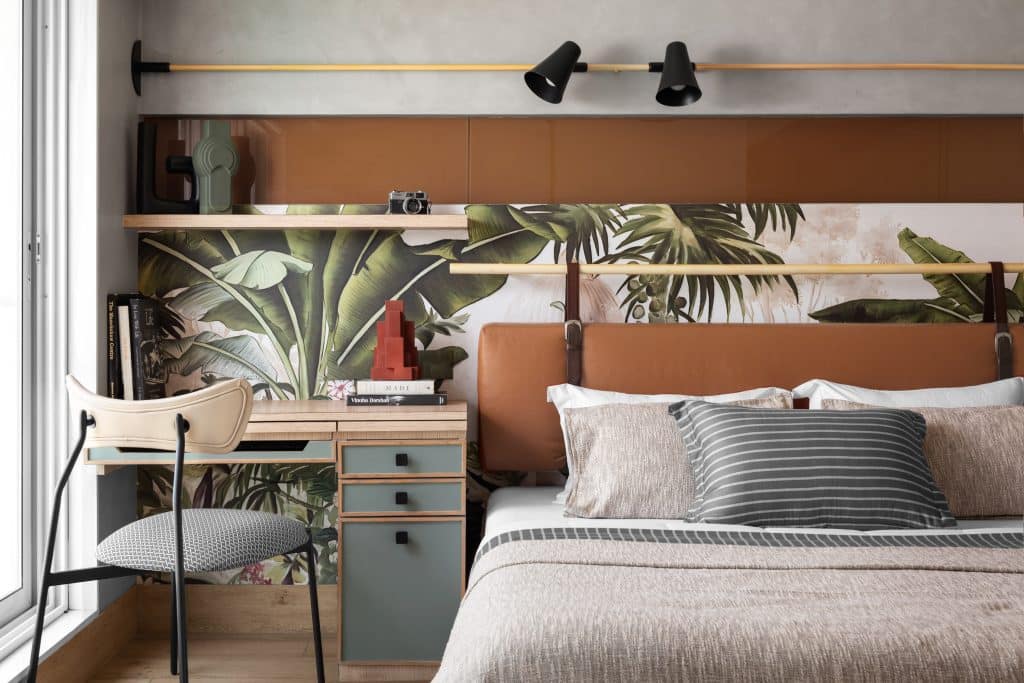
What’s the biggest challenge in balancing technology with design—especially when it comes to concealing devices or avoiding clutter?
The challenge is two-fold: first, hardware often has a very “tech-first” aesthetic that can jar with softer interiors. Second, clients want maximum functionality with minimum visual intrusion. The solution lies in custom cabinetry, recess detailing, and smart material choices that allow speakers, sensors, and screens to disappear until called upon.
Have you worked on a project where smart automation truly elevated the user experience? Can you share what made it successful?
Yes, in the Mrignain residence, automation wasn’t just about convenience; it was about weaving technology into daily rituals. We integrated circadian lighting, automated drapery, and a centralised AV system that adjusted intuitively to the family’s lifestyle: soft daylight settings in the morning, entertainment modes in the evening, and secure remote access when away. To make it truly invisible, we added wall-integrated speakers that disappear into the architecture, and the music flows through the home without a single device in sight.
How do client expectations around smart features vary — are they mostly focused on convenience, security, or luxury?
There’s a generational split: younger clients prioritise convenience and lifestyle automation, lighting, entertainment, and climate, while senior homeowners prioritise security and ease of access. At the ultra-luxury level, it’s about blending all three effortlessly, where technology becomes an invisible layer of comfort.
Do you have preferred automation products or brands that you trust to blend well with premium interiors?
We lean towards brands that offer two things: integration flexibility and design discretion. Technology should enhance, not announce itself, especially in premium interiors. For lighting, we often work with Lafit, Littoria, and Nirvana, all of whom bring a range of lighting solutions that can be tied into automation systems. For air conditioning, Carecool Services Pvt. Ltd. has been a reliable partner, ensuring comfort without bulky visual intrusion.
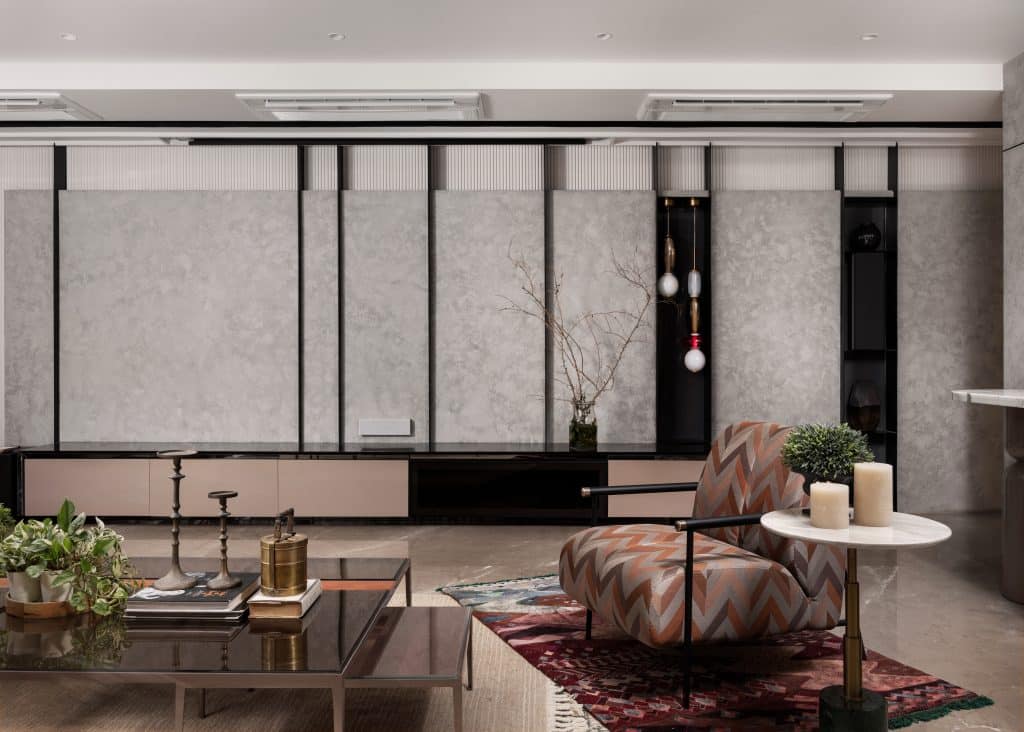
Beyond these, we prefer ecosystems that allow scalability, whether that’s Lutron for intelligent lighting control or KNX-based solutions that can be customised across lighting, HVAC, and AV. The key is always the same: the tech should vanish into the background while the experience takes centre stage.
As homes get smarter, how do you see the role of architects and designers evolving — will tech fluency become a core skill in your profession?
Absolutely. Designers can no longer treat technology as an afterthought; fluency in automation basics is becoming as critical as understanding lighting or materiality. The future role of designers and architects will be that of orchestrators, ensuring that tech, design, and lifestyle don’t just coexist but elevate each other.
Mehmet Deniz Kaya, Global Vice President & MD Middle East, Barco Residential
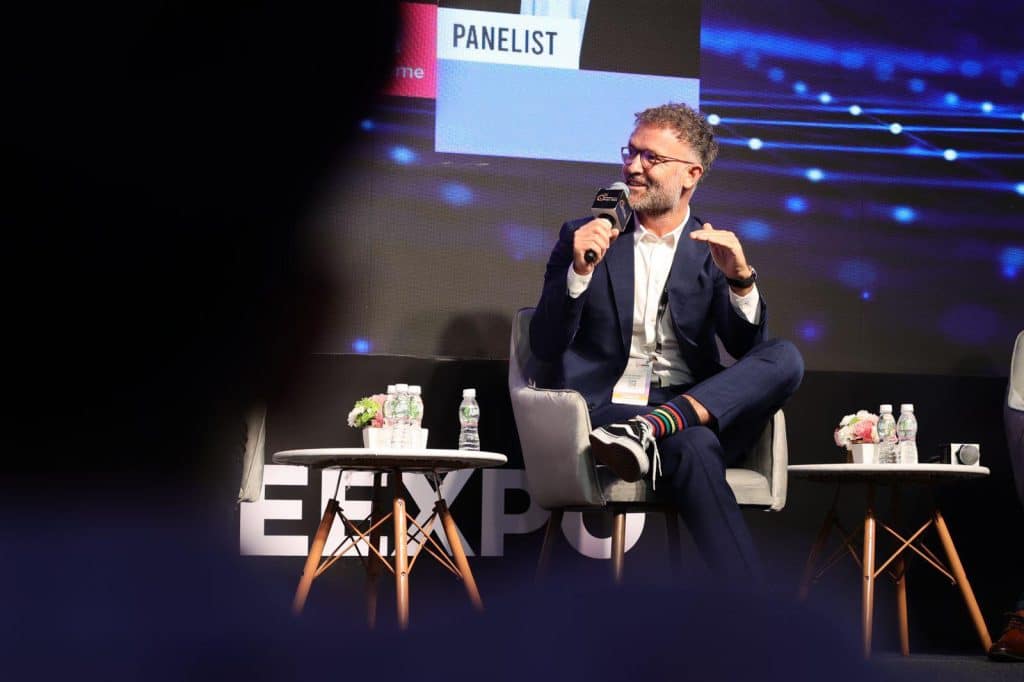
When designing a smart home system, how do you approach protocol integration — whether it’s KNX, Zigbee, Z-Wave, or proprietary platforms?
As a display technology provider, we don’t directly dictate the protocol layer. However, we ensure full compatibility with the leading control systems used by high-end integrators. Whether it’s KNX or a proprietary AV framework, our focus is on seamless integration with media servers, automation platforms, and control interfaces — ensuring our projection and LED wall systems become a natural part of the broader smart home ecosystem.
We also believe that a “smart home” goes beyond hardware and protocols. A truly smart home integrates our visual systems into the rhythm of daily life. We prioritize smart design — LED walls that remain hidden until needed, projectors that are offset or fully concealed yet capable of high performance in bright, architecturally sensitive spaces. The goal isn’t just connectivity — it’s invisibility until impact.
What’s your preferred approach: centralized or decentralized automation systems — and how does that choice affect scalability and maintenance?
Both models can be effective, provided the AV infrastructure is designed with scalability and serviceability in mind. Our systems are typically integrated into centralized AV racks or media rooms, but we work closely with integrators to ensure flexible deployment. We incorporate diagnostic and remote monitoring capabilities to support maintenance, regardless of the automation topology. Ultimately, the choice depends on the project’s scale, complexity, and client expectations.
How do you ensure different brands and systems (lighting, AV, HVAC, security) work seamlessly together for a smooth user experience?
Close collaboration is essential. We work hand-in-hand with integration partners to ensure our projection and LED products are pre-certified or tested for compatibility with leading control ecosystems (e.g., Crestron, Control4, Savant). We prioritize user experience over technical complexity, ensuring smooth interoperability across lighting, AV, HVAC, and security systems.
Can you walk us through your typical testing and commissioning process before handing over a project to the homeowner?
Before handover, we rigorously test both the visual performance (calibration, focus, brightness uniformity) and integration points — ensuring the system responds accurately to automation triggers, AV switchers, and control commands. We support integrators with on-site or remote validation and provide end-user training for a smooth transition.
A highly capable system is only as good as its tuning. Calibration is essential — not just for image quality, but for harmony with the physical environment. We account for light spill, viewing angles, and room surfaces, all of which impact performance.
How involved are you in the early design phase, and what’s the impact when you’re brought in too late by architects or designers?
Early involvement is crucial, especially for display-centric spaces like private cinemas or media rooms. Screen size, throw distance, ventilation, and cable routing — all require early planning. Late involvement often leads to compromises in image quality, speaker placement, or ventilation.

Elements like screen size, throw distance, thermal dispersion, cable routes, lighting (direct, indirect, reflective), viewing geometry, sightlines, hazard zones, and visual fatigue factors must be considered from the outset. These are core to a successful outcome and should never be afterthoughts.
What kind of interface customization do you offer — touch panels, mobile apps, voice and what are clients gravitating toward lately?
While we don’t provide user interfaces directly, we support full customization through integrators’ platforms. We’re seeing growing demand for voice-activated scenes (e.g., “movie night”), mobile app control for projector settings, and personalized presets that integrate lighting, audio, and visuals — all managed through the client’s preferred smart home interface.
Cybersecurity and privacy are becoming big concerns. How do you secure smart home systems from potential vulnerabilities?
Our devices adhere to best practices, including secure firmware, encrypted communication, password-protected admin access, and minimal exposure to external networks.
What’s been your biggest challenge in collaborating with architects and interior designers and how can the process improve?
The biggest challenge is spatial planning — especially when aesthetics compete with technical requirements. Large projectors and LED walls need proper sightlines, ventilation, and acoustic treatment, which are difficult to retrofit.
The solution lies in early education and co-design. When architects understand the visual possibilities, they often find creative ways to integrate technology seamlessly without compromising design.
Looking ahead, what tech trends like AI, local control, or energy management do you believe will reshape smart homes in the next 3–5 years?
We see three transformative trends shaping the smart home entertainment experience:
- AI-powered scene awareness: Systems that dynamically adapt lighting, sound, and visuals based on content and user behavior.
- Cinematic-grade LED displays: Entering ultra-luxury homes, offering immersive visual storytelling.
- Wellness-integrated entertainment: Systems designed not just for watching, but for decompressing — including circadian lighting and mood-matched visuals.
We believe the future of smart homes is experiential — with visual storytelling at its core.
Kuntal Vyas Aggarwal, Founder & Design Head, Resaiki Interiors and Architecture Design Studio
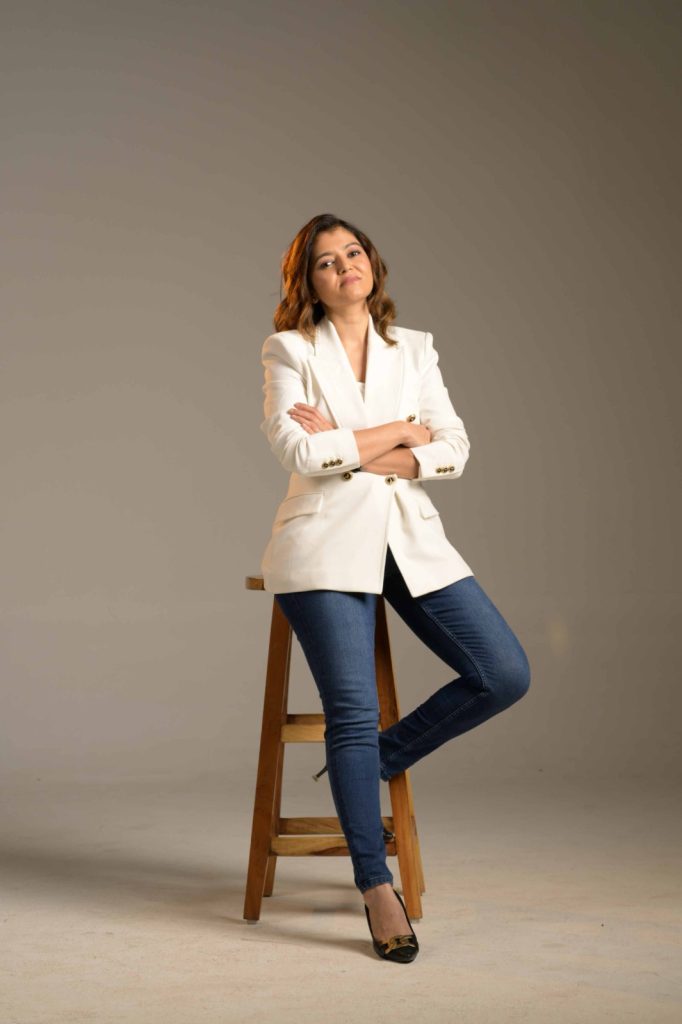
How has the growing demand for smart homes influenced your design philosophy — both in terms of space planning and aesthetics?
We view smart homes as adaptive environments that evolve with their users. In terms of spatial planning, the focus is on creating flexible zones that cater to wellness using concepts like circadian lighting in nooks, discreet stacks for air-quality control, and passive ventilation paths, which function on comfort-driven cues. Aesthetically, the preference is toward using “invisible technology” in homes, such as motorised drapery, flush-mounted controls, etc. The underlying intent is to merge technology and tranquility, ensuring each space feels aligned to the user’s functional and emotional needs.
At what stage of a project do you typically start thinking about technology integration, and how early do you bring in system integrators or consultants?
Technology planning begins at the very inception, during site analysis and conceptual mapping. This ensures infrastructure for automation is woven into the foundational layers, from concealed cabling to spatial zoning for tech-active areas.
Collaboration with smart home system integrators during schematic design allows for key components such as home automation controllers, network hubs, and sensor enclosures to be integrated into the design. This synergy between designer and integrator avoids visual clutter and preserves spatial clarity.
What’s the biggest challenge in balancing technology with design—especially when it comes to concealing devices or avoiding clutter?
The challenge lies in keeping tech present yet invisible. Achieving this requires forethought in placement, for example, integrated motorised blinds in roof coves instead of side mounts, speakers built into shelves, etc. The aim is to enrich daily rituals without compromising the elegance of the interiors.
Have you worked on a project where smart automation truly elevated the user experience? Can you share what made it successful?
In one of our recent projects, Warrior’s Paradise, we used smart automation to elevate the residence beyond luxury into an effortless experience. While the residence draws inspiration from French palatial design, the integration of technology ensures it functions with modern ease.
Automation was woven subtly into the fabric of daily life—motorised curtains to ensure privacy, intelligent lighting that adapts to mood and function, and a state-of-the-art home theatre in the basement that transforms family gatherings into cinematic experiences. These features were not treated as add-ons but as extensions of the design intent, enhancing comfort while preserving the home’s vintage charm.
How do client expectations around smart features vary — are they mostly focused on convenience, security, or luxury?
Many clients are focused on convenience—simplified lighting, voice control, and automated shades. Others lean toward well-being, asking for circadian lighting, clean air, and wellness routines to be embedded within the space. They also look for seamless elegance like controls that disappear, and environments that adapt intuitively. These preferences guide how technology is curated, both functionally and emotionally.
Do you have preferred automation products or brands that you trust to blend well with premium interiors?
We favour systems that prioritise discretion: sleek smart lighting panels, hidden sensors, and voice assistants that can be embedded into cabinetry or subtle decor. Brands that design with form in mind—like AI-led climate control systems, circadian lighting solutions, and wellness-enhancing air systems—are preferred. Interoperability, minimal visual footprint, and emotional resonance guide our selection.
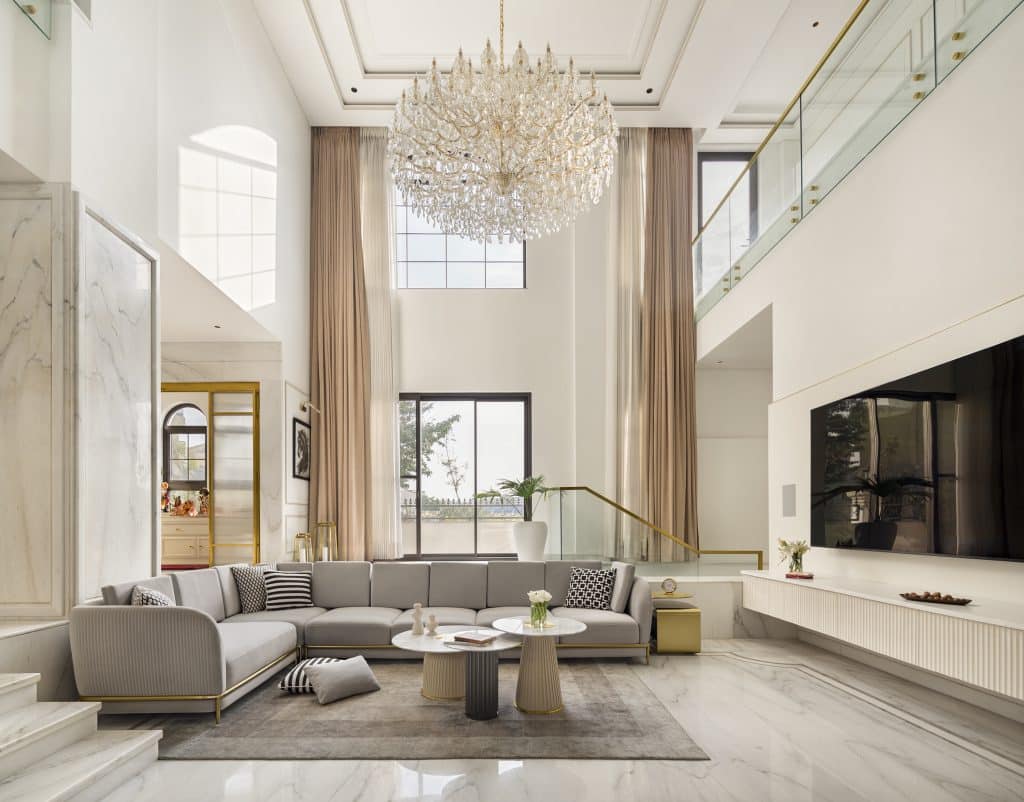
As homes get smarter, how do you see the role of architects and designers evolving — will tech fluency become a core skill in your profession?
Absolutely. Designers are no longer just creators of spaces, but curators of experiences. As technology becomes invisible yet essential, our role is to choreograph how it interacts with light, material, and human behaviour. Fluent understanding of system protocols, wellness-driven automation, and human-centred data analytics is becoming essential. The future of design lies in ensuring that innovation always serves life, not the other way around.
Rashi Bothra & Ruchi Gehani – Founders & Interior Designers, Azure Interiors
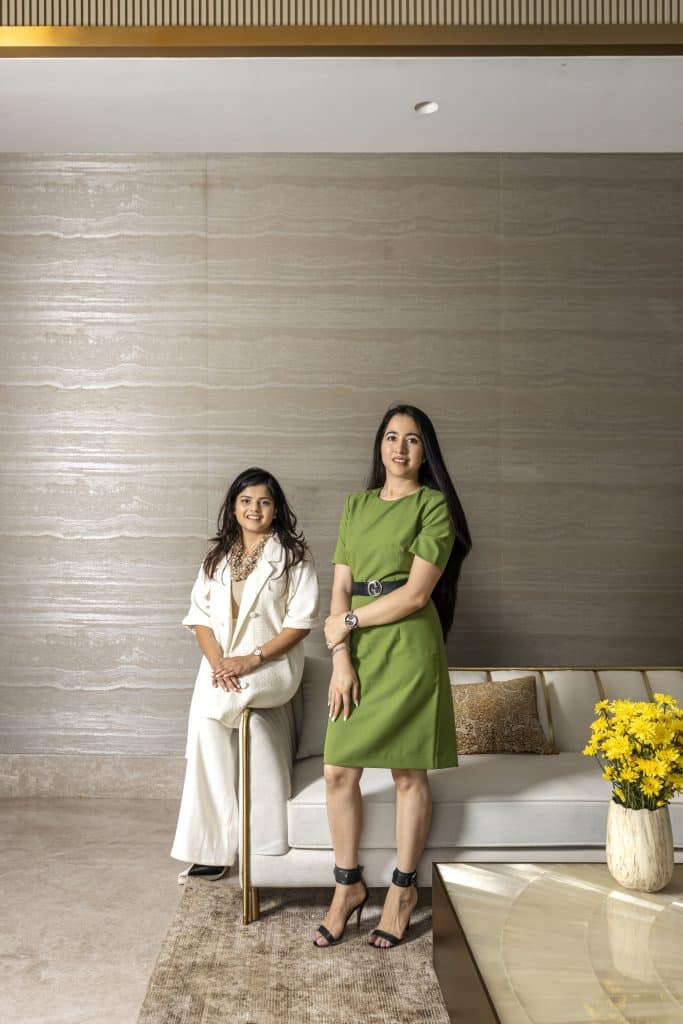
How has the growing demand for smart homes influenced your design philosophy — both in terms of space planning and aesthetics?
Smart homes have encouraged us to design with greater foresight, ensuring layouts accommodate concealed wiring, hubs, and automation. Aesthetically, we lean toward clean, minimal forms where technology integrates quietly into the background. The focus remains on timeless beauty, but supported by invisible convenience.
At what stage of a project do you typically start thinking about technology integration, and how early do you bring in system integrators or consultants?
Technology integration starts right from the concept stage. Early collaboration with system integrators allows us to plan infrastructure in sync with the layout, cabinetry, and finishes. This proactive approach ensures functionality without disrupting the design narrative.
What’s the biggest challenge in balancing technology with design—especially when it comes to concealing devices or avoiding clutter?
The biggest challenge is avoiding visual clutter caused by multiple devices. We resolve this by integrating controls into wall paneling, using flush-mount systems, or blending them with bespoke furniture. The goal is for technology to feel intuitive yet invisible.
Have you worked on a project where smart automation truly elevated the user experience? Can you share what made it successful?
Yes, in Kuche7’s Delhi store, we have integrated a smart kitchen with their offerings and there are few luxury residences, where we have integrated smart lighting and automated curtains, transforming the way spaces are experienced. Clients could switch between moods with just one touch. With this successful lay in seamless integration of technology in interiors, elegance remains undisturbed and visual clutter-free
How do client expectations around smart features vary — are they mostly focused on convenience, security, or luxury?
Client expectations vary depending on lifestyle. Families often value convenience and security, while younger homeowners see automation as a symbol of luxury. We find the sweet spot by tailoring solutions that blend functionality with a premium, lifestyle-driven experience.
Do you have preferred automation products or brands that you trust to blend well with premium interiors?
We prefer systems that are discreet, reliable, and customizable rather than brand-specific. Minimal and modular controls with sleek interfaces work best with our luxury interiors, allowing technology to enhance the space without drawing attention to itself.
Parnika Kapur Julka, Co-Founder & Principal Designer, Attico Homes
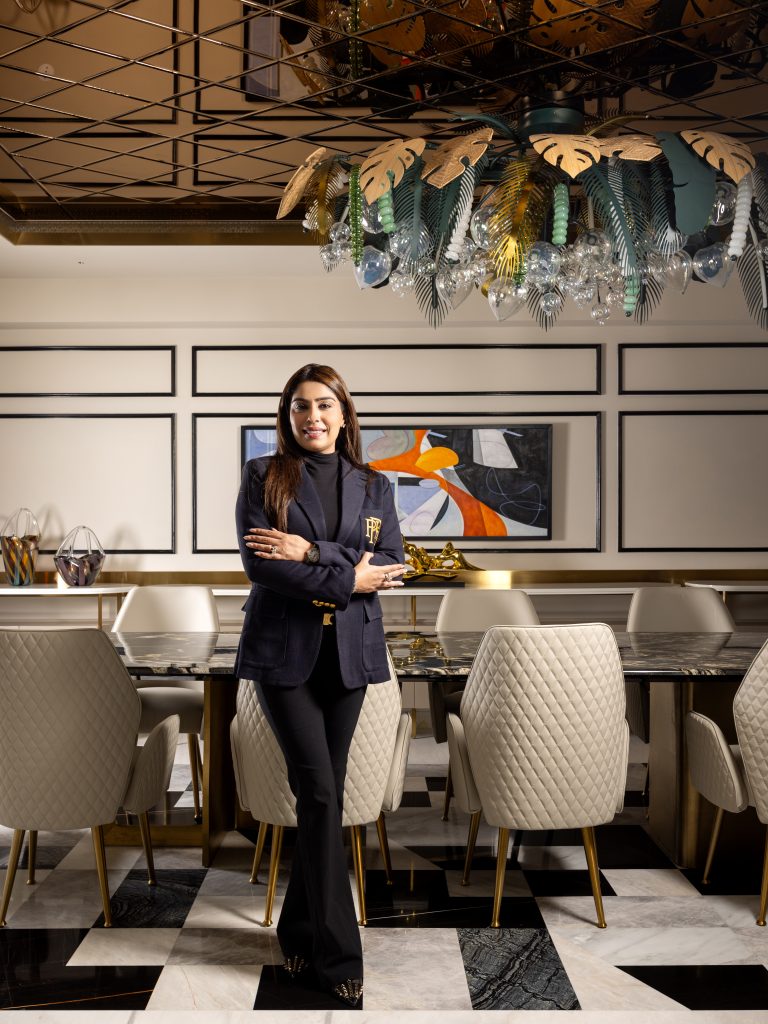
How has the growing demand for smart homes influenced your design philosophy — both in terms of space planning and aesthetics?
The rise of smart homes has reshaped my design philosophy by emphasizing seamless integration of technology with everyday living. Space planning now prioritizes hidden infrastructure for smart systems, while aesthetics lean toward minimalist, clutter-free environments that complement sleek, tech-enabled features. The goal is to create intuitive, functional spaces that feel both sophisticated and effortlessly connected.
At what stage of a project do you typically start thinking about technology integration, and how early do you bring in system integrators or consultants?
I start considering technology integration right from the concept stage, ensuring it blends seamlessly with the design vision rather than feeling like an afterthought. System integrators or consultants are usually brought in during the early design development phase so that wiring, automation, and smart solutions can be coordinated alongside spatial planning. This proactive approach ensures both aesthetics and functionality align effortlessly.
What’s the biggest challenge in balancing technology with design—especially when it comes to concealing devices or avoiding clutter?
The biggest challenge is integrating advanced technology without disrupting the purity of the design. Devices often bring visual clutter, so the focus lies in concealing them through custom joinery, seamless wall panels, or multi-functional furniture. Achieving this balance requires foresight—planning niches, wiring routes, and finishing early so the technology feels invisible yet effortlessly accessible.
Have you worked on a project where smart automation truly elevated the user experience? Can you share what made it successful?
Every project we do has automation to some extent. Clients love it, and we suggest very user-friendly interfaces, so it does make their lives very convenient
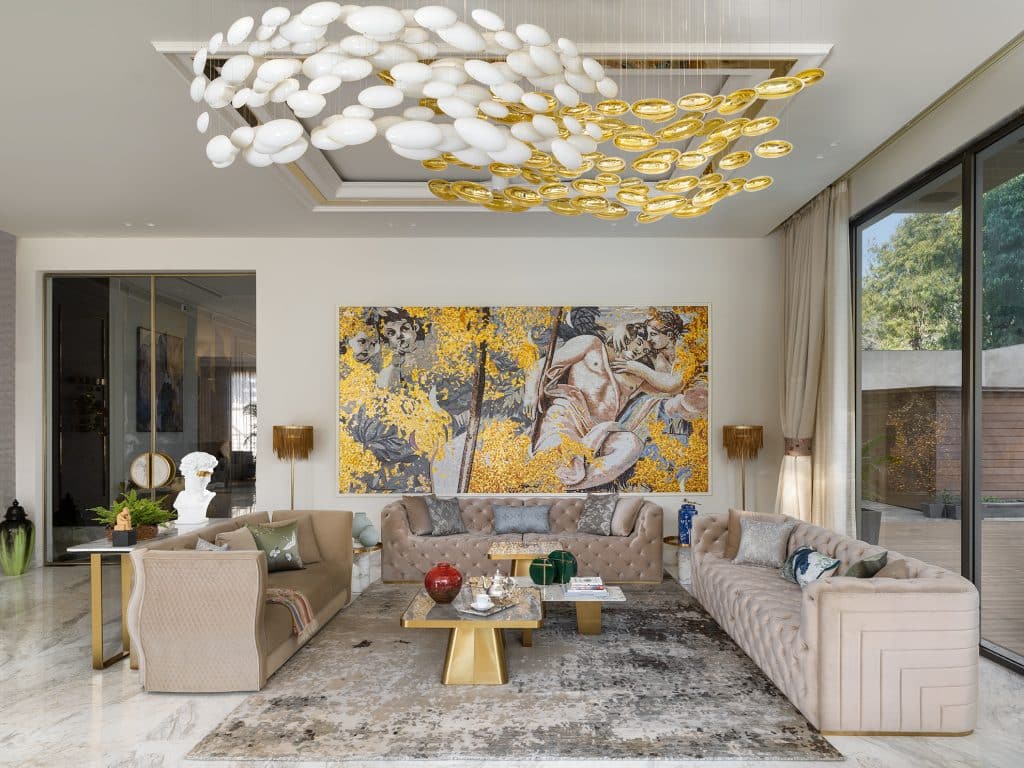
How do client expectations around smart features vary — are they mostly focused on convenience, security, or luxury?
Client expectations around smart features vary by lifestyle, but most center around three key priorities: convenience, security, and luxury. Tech-savvy clients often prioritize automation and ease; like voice-controlled lighting or climate systems—while families tend to focus on enhanced security. High-end clients, meanwhile, seek a blend of all three, expecting seamless integration that elevates comfort and delivers a sense of modern luxury.
Do you have preferred automation products or brands that you trust to blend well with premium interiors?
Lutron is the best for premium projects. We also use KNX-based systems, as they give us varied options for keypads.
Futuristic Outlook
The next phase of smart homes will likely see AI-driven predictive design, where spaces self-configure based on who is present, the time of day, or even emotional cues. The boundary between digital and physical living will blur further, creating homes that don’t just respond to us but resonate with us.
In essence, connected living is not about technology replacing design, but technology becoming design. It’s the art of creating spaces that think, feel, and adapt—making the smart home not just a futuristic dream but today’s evolving reality.



